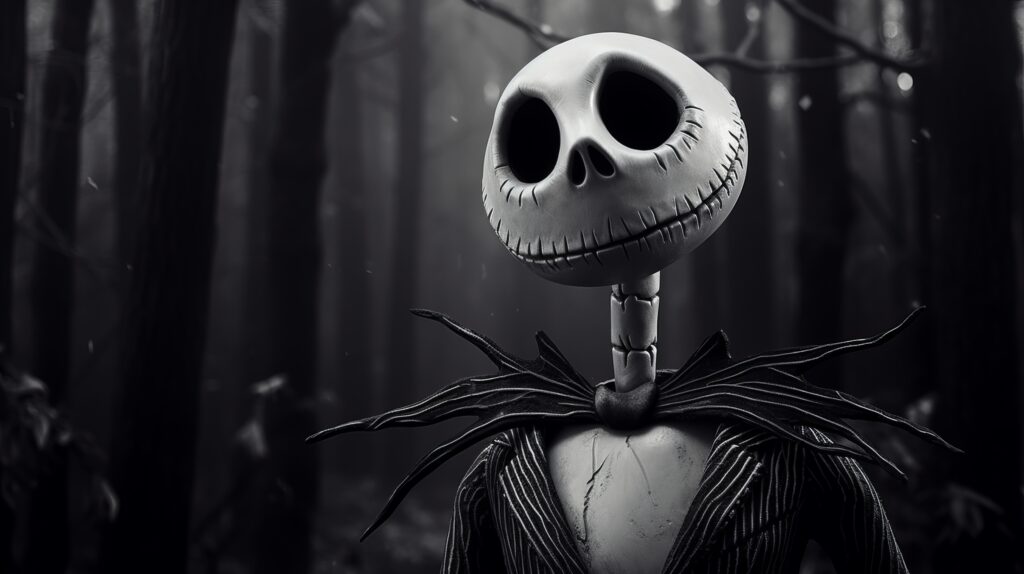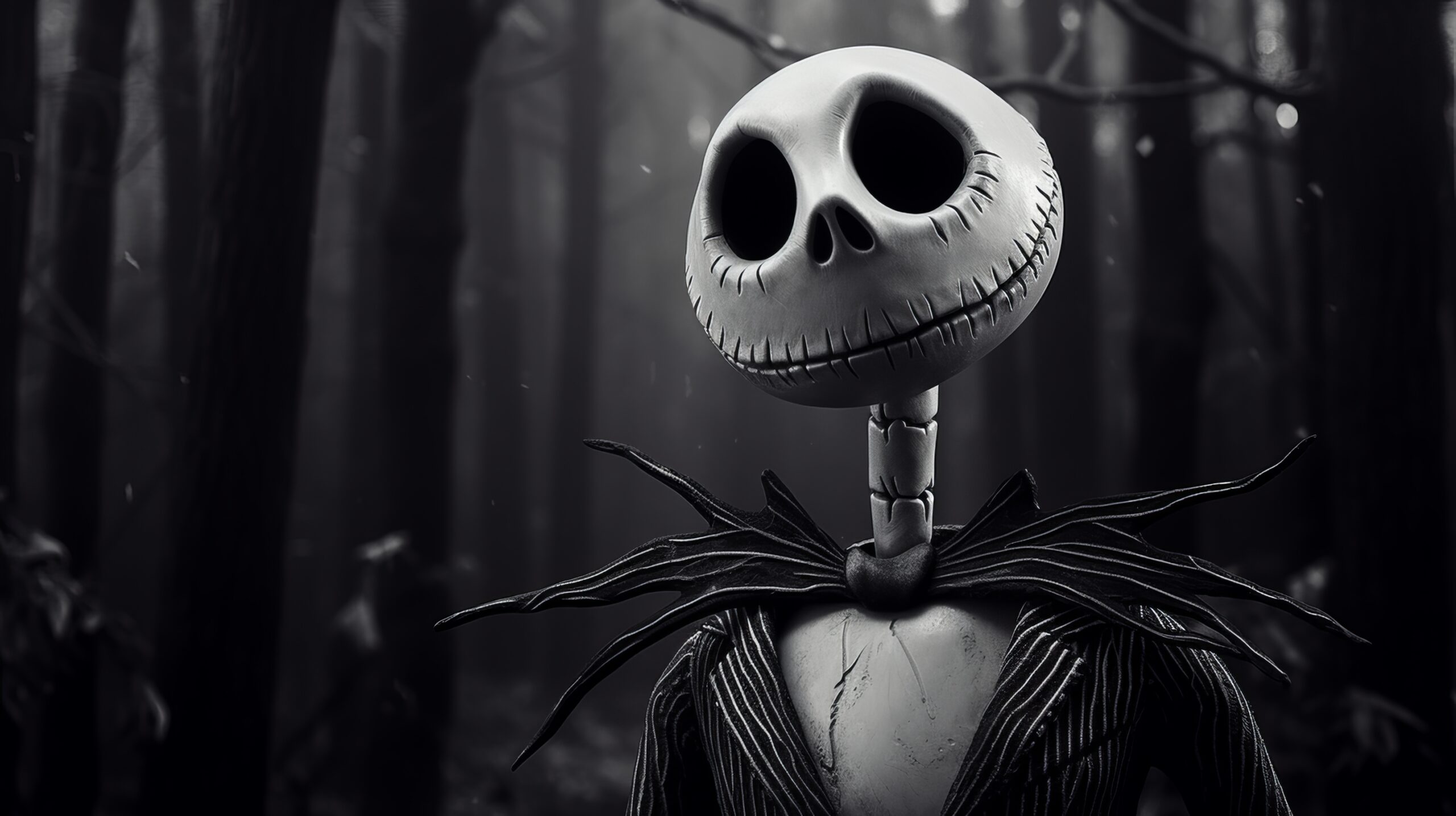
Jack Skellington: The Enduring Appeal of Halloween’s Pumpkin King
Jack Skellington, the Pumpkin King of Halloween Town, is a character that has captivated audiences for decades. From his humble beginnings in Tim Burton’s “The Nightmare Before Christmas,” Jack has become a cultural icon, representing the spirit of Halloween and the yearning for something more. This article delves into the character’s origins, his impact on popular culture, and the reasons behind his lasting appeal. We will explore why Jack Skellington continues to resonate with fans of all ages, cementing his place as a beloved figure in the world of animated films and beyond.
The Genesis of a Pumpkin King
Jack Skellington wasn’t initially conceived as the star of a feature film. The character originated from a poem written by Tim Burton in 1982, while he was working as an animator at Disney. Burton, feeling creatively stifled, envisioned a world where Halloween and Christmas collided. This seed of an idea eventually blossomed into “The Nightmare Before Christmas,” released in 1993. The film, directed by Henry Selick and produced/conceived by Burton, introduced the world to the lanky, skeleton figure we now know and love. The stop-motion animation brought Jack Skellington to life in a way that traditional animation couldn’t, adding to his unique and somewhat eerie charm.
The Allure of Halloween Town
Halloween Town, the home of Jack Skellington, is a fantastical realm populated by ghouls, goblins, and other creatures of the night. It’s a place where every day is Halloween, and the residents are dedicated to scaring and delighting. However, Jack Skellington, despite being the most celebrated figure in this spooky metropolis, feels a sense of ennui. He’s tired of the same old routine of scares and seeks something new and exciting. This feeling of dissatisfaction is something many viewers can relate to, making Jack Skellington a surprisingly relatable character despite his skeletal appearance.
Jack’s Christmas Quest
Jack Skellington’s yearning for something different leads him to stumble upon Christmas Town. He is immediately mesmerized by the warmth, joy, and vibrant colors of Christmas. He becomes determined to understand and, ultimately, take over Christmas. This ambition, while well-intentioned, leads to chaos and near-disaster. Jack Skellington’s attempt to reinterpret Christmas through a Halloween lens results in a bizarre and slightly terrifying version of the holiday, highlighting the importance of understanding and respecting different cultures and traditions. [See also: The Nightmare Before Christmas: A Cultural Phenomenon]
A Symbol of Yearning and Identity
One of the key reasons for Jack Skellington’s enduring popularity is his representation of the universal human desire for something more. He embodies the feeling of being stuck in a rut and the longing to break free from monotony. His journey to discover and understand Christmas is a metaphor for the search for identity and purpose. Jack Skellington isn’t just a scary skeleton; he’s a complex character who grapples with existential questions, making him resonate with audiences on a deeper level.
Impact on Pop Culture
Jack Skellington has had a significant impact on popular culture. His image is instantly recognizable, and his likeness appears on a wide range of merchandise, from clothing and accessories to home decor and collectibles. The film “The Nightmare Before Christmas” has spawned a massive fanbase, with dedicated followers who celebrate the film’s unique blend of Halloween and Christmas themes. Cosplay of Jack Skellington is extremely popular at conventions and Halloween events. The character has even made appearances in other Disney properties, further cementing his place in the Disney pantheon.
The Music of Danny Elfman
The success of Jack Skellington and “The Nightmare Before Christmas” is inextricably linked to the music of Danny Elfman. Elfman composed the film’s iconic score and wrote the lyrics for the songs, including the memorable “This Is Halloween” and “Jack’s Lament.” His music perfectly captures the film’s blend of whimsy, darkness, and emotion. Elfman’s contributions helped to elevate Jack Skellington from a simple character to a fully realized and emotionally resonant figure. The songs are integral to understanding Jack Skellington’s inner turmoil and his journey of self-discovery.
The Art of Stop-Motion Animation
The stop-motion animation of “The Nightmare Before Christmas” is another crucial element of Jack Skellington’s appeal. The painstaking process of animating each character and set frame by frame gives the film a unique and visually striking aesthetic. The jerky, slightly imperfect movements of the characters add to their charm and create a sense of otherworldly realism. The dedication and artistry that went into creating Jack Skellington and his world are evident in every frame of the film. This meticulous craftmanship contributes significantly to the film’s enduring legacy. [See also: The History of Stop-Motion Animation]
Jack Skellington’s Continued Relevance
Even decades after his debut, Jack Skellington remains a relevant and beloved character. His themes of self-discovery, the search for purpose, and the acceptance of differences continue to resonate with audiences of all ages. The film’s unique visual style and memorable music ensure that Jack Skellington will continue to be a fixture of Halloween and Christmas celebrations for generations to come. His story is a timeless reminder that it’s okay to be different and that the pursuit of happiness is a journey worth taking. Jack Skellington teaches us that embracing change and seeking new experiences can lead to unexpected and rewarding discoveries. Furthermore, the character’s design is instantly iconic, making him easily marketable and recognizable across various platforms.
Beyond the Screen: Jack Skellington’s Merchandise Empire
The popularity of Jack Skellington has translated into a vast merchandising empire. From Halloween costumes and decorations to everyday items like mugs, t-shirts, and backpacks, Jack Skellington‘s image adorns a wide array of products. This widespread availability further solidifies his presence in popular culture and ensures that his fans can express their love for the character in countless ways. The continued demand for Jack Skellington merchandise is a testament to his enduring appeal and his status as a cultural icon.
The Future of the Pumpkin King
While there are no immediate plans for a sequel to “The Nightmare Before Christmas,” Jack Skellington‘s legacy is secure. He continues to be featured in Disney parks, merchandise, and other media. His influence can be seen in other animated films and television shows that explore similar themes of identity and belonging. Jack Skellington‘s story is a timeless one, and his character will undoubtedly continue to inspire and entertain audiences for many years to come. He is more than just a Halloween icon; he is a symbol of creativity, imagination, and the power of believing in something different. Jack Skellington, the Pumpkin King, reigns supreme.
Conclusion
Jack Skellington is more than just a character; he’s a cultural phenomenon. His journey from a bored Pumpkin King to a seeker of new experiences resonates with audiences worldwide. His unique design, combined with Danny Elfman’s iconic music and the film’s stunning stop-motion animation, has cemented his place as a beloved figure in the world of animation. Jack Skellington’s enduring appeal lies in his ability to embody the universal human desire for something more, making him a character that will continue to captivate and inspire for generations to come. He remains a timeless symbol of Halloween, Christmas, and the power of imagination.

